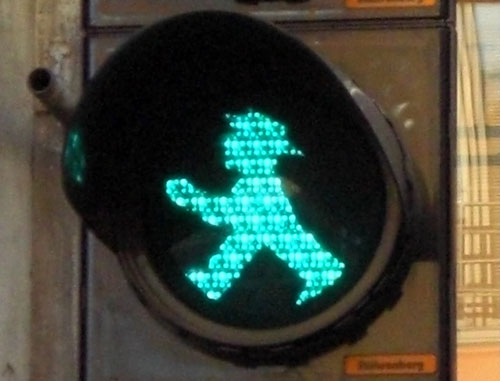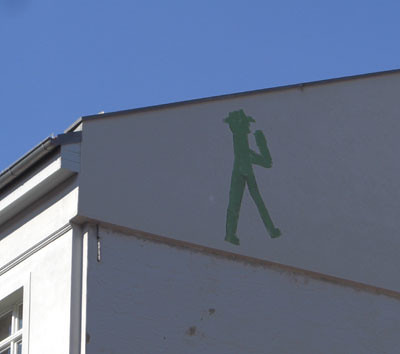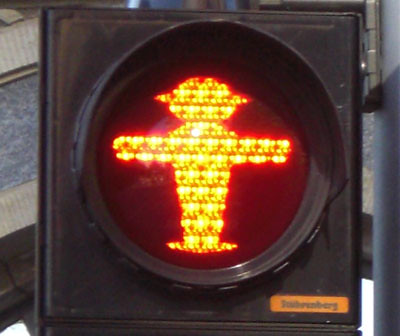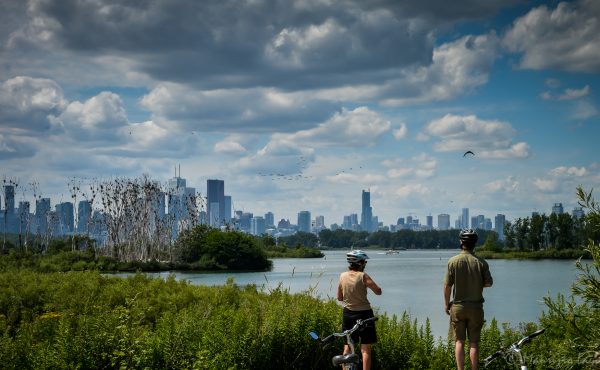
I recently went on a trip to Paris and Berlin, and I’m going to post a few impressions and photos over the coming weeks.
One of the first things that struck me when I initially stepped out onto the street in Berlin was the “walking man” signal. Unlike the functional symbols I’ve seen elsewhere, Berlin’s was distinctive, a dapper man with a hat and a certain élan in his step. I was immediately charmed.
I soon found out I wasn’t the only one who reacted this way. There is a whole story — and something of a cult — around the “ampelmann,” as he is called. There is even a series of stores where you can buy merchandise, and he features in plenty of graffiti.

It turns out this charming symbol was developed in East Berlin, designed in 1961 (shortly after the wall went up). After German reunification, the city decided to unify and modernize the walking man signals, using the conventional western symbol. But resistance movement slowly rose to say “stop.”

People pointed out that, in fact, in this one case the eastern version was better than the western one. The authorities eventually gave in and kept the ampelmann. There are now even a few in the former western part of the city, but in general, the presence of the ampelmann is one of the only ways to tell if you’re in the former East Berlin.
The fight over the ampelmann also resulted in renewed interest in pedestrian signals around the world, a great page that scrolls you through walking-person signals (some include women) from many different cities. And there’s also, of course, a flikr group.
Another pedestrian signal I took a liking to on my trip was the “don’t walk” symbol that appears on some signals in Paris. With his hands on his hips, he looks impatient for the light to change so he can cross and get going.

It’s particularly apt in Paris, where there’s no flashing red and so the “don’t walk” signal is what you see most of the time, and you often feel exactly this way.
The contrast in the number of pedestrian signals between Paris and Berlin is also interesting. In Paris, there are traffic signals everywhere, even at many small intersections of narrow streets, always accompanied by these small pedestrian signals (so small that my first day there I often didn’t notice them). In Berlin, by contrast, where the side streets are generally wider, intersections often had no traffic management at all — not even stop signs, as far as I could tell. I assume vehicles are supposed to yield to the right. I wasn’t sure what the rules were for pedestrians, but it always seemed to work out since cars were slowing down to see if they had to yield anyway. It was only at larger or busier intersections that you got traffic signals accompanied by, in much of the city, the ampelmann.




4 comments
I was in Berlin this past May and what I found frustrating is that you never know how long you have to cross the street until the light turns red again.
If you see green and you start to cross, halfway through the crossing it might turn red without any intermediate signal that tells you that it’ll be turning red soon.
aww I love handsome stick figures for public signage!!
I was very disappointed at the new ttc hybrid buses because they don’t have the handsome man with the beard and the fancy lady with the handbag telling me how to get off of a bus. Now it’s a lame, sexless gumbi-esque (without being gumbi-cool) looking stick figure.
I also enjoy the signs that warn that moose are in the area and could charge the road. The moose looks very very angry and it makes me smile.
I bought Ampelmann bottle openers for all my family while in Berlin in January. He’s everywhere, much loved. Too bad Toronto doesn’t have something similar. We could try for the raccoon, no?
I think Toronto should have the moose!
California should the Ampelmann but with botox lips
and big boobies!